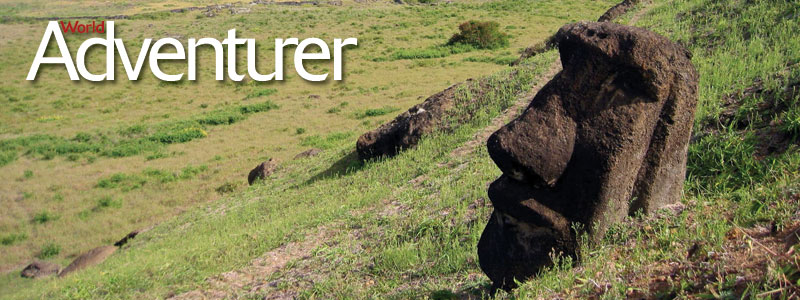Let Sleeping Gods Lie
I'm almost ashamed to admit that it was the altogether incredible author, Erich von Daniken, who fired my fascination with far-off and mysterious lands.
When Chariots of the Gods burst onto TV screens in the early '70s, I was but a naïve, goggle-eyed youngster all too ready to consume these wild theories. But quite apart from perpetrating outlandish notions of alien interference, the charlatanic von Daniken did introduce me to some of the little known mysteries of the ancient world.
The magnificent and mysterious realm of the Mayas of Central America, the perplexing and complex Nazca lines of Peru and the huge, stony-faced inhabitants of Easter Island intrigued me to the point of near-fanaticism. It was then that I resolved to visit each of these fascinating locations and discover for myself the wonders within.
Now, some thirty years later and with a modicum of wisdom in tow, I am beginning to cross these enigmatic sites off my very short list. Each visit duly dispels any rumours of extraterrestrial involvement, but rekindles anew my childlike enthrallment with the persistent mysteries.
En route to South America, I arranged a stopover on the tiny Isla de Pascua, more commonly known as Easter Island thanks to the Dutchman, Jacob Roggeveen, who rediscovered it in 1722. This improbable little speck in the Pacific is officially the most remote habitation on the planet and for several centuries the indigenous Rapa Nui people lived in splendid isolation. Just how and from where they arrived has long been a raging debate amongst anthropologists and archaeologists. An enigma made all the more intriguing by the fact that almost all of the oral history is hopelessly garbled and the skills required to read their ancient tablets was lost to Peruvian slave traders in the 19th century.
Today the "navel of the world" is a delightfully relaxed Chilean outpost, over 3500 kms from Santiago and pleasantly devoid of the modern, vulgar trappings of international tourism. Unfortunately the island of about 4,000 inhabitants is also almost completely devoid of indigenous Rapa Nui thanks to the intervention of slavers, missionaries and the inevitable diseases that travel with white men. 20,000 tourists however come and go each year and the convoluted LanChile airline schedules are such that a three or four day stay is almost mandatory.
Flying to Easter Island is an adventure in itself. Your first clue comes when the aircraft begins to descend into what appears to be a completely featureless ocean. No telltale atolls, lagoons or reefs to signal the impending destination. Craning for some clue, I caught sight of a few forlorn Moai along the west coast immediately before flight LA834 touched down on the ample runway. The huge strip at Mataveri is actually the longest in Chile and was upgraded by NASA to serve as an emergency strip for the space shuttle.
It's hard to imagine that Easter Island was possibly once the world's largest bird colony, replete with terns, albatross and petrels in apparently boundless plenty. The landscape, now merely lush pastures dotted with imported eucalypts to shelter sheep and livestock, was once an impenetrable palm jungle, all laid waste for the glory and gratification of the stony ancestor gods who later stood silently by while their world crumbled into mayhem. Their mute complicity however did not go unpunished and the emaciated, battle-weary villagers turned on their nonchalant idols, beheading them, toppling them and thrusting their uncaring faces into the mud.
My own Rapa Nui experience lasted a mere three days and as I strolled out to the waiting aircraft laden with little mini-moai souvenirs, I felt there was still more to explore. All the wanderings amongst the giant mute moai, the caves, the petroglyths and the long list of theories and postulations still manage to raise questions faster than I can find answers. To my mind, Easter Island should keep at least some of its secrets intact to intrigue and entice mystery-hunters and preserve its hard won enigmatic appeal. The lessons likely to be revealed by more energetic study will almost certainly add to the already unpalatable morals derived from self-worship and aggrandisement. Let sleeping gods lie, I say.
